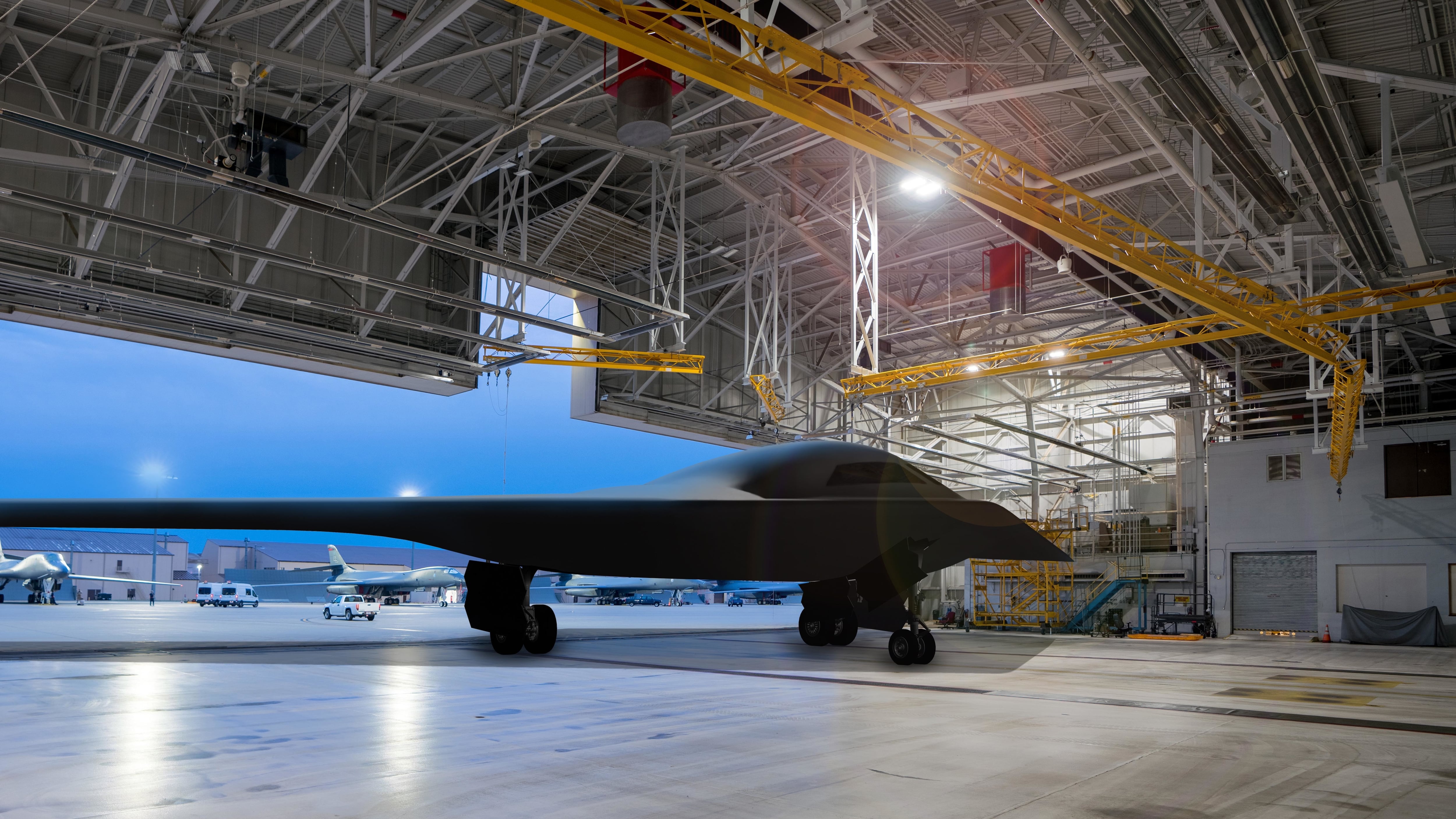WASHINGTON — The first flight of the B-21 Raider is expected to take place next year, manufacturer Northrop Grumman said Wednesday.
The public unveiling of the Air Force’s next stealth bomber is still expected later in 2022, the company said in a release. First flights of a new aircraft typically take place several months after such rollout ceremonies.
The first B-21 finished its first in a series of ground tests at Air Force Plant 42 in Palmdale, California, earlier this month, according to Northrop. The loads calibration test was the most critical in the process, the company said. The drill involves configuring the aircraft’s instruments and verifying its structural integrity by subjecting it to varying amounts of stress.
That test was successful, according to Northrop, which means the initial B-21 — one of six now in production or testing — is continuing toward its first flight. The ground test phase will next involve powering up the bomber, testing its subsystems, and applying coatings and paint. Northrop announced in early March that the ground test phase had begun.
After that, Northrop will carry out engine runs and both low- and high-speed taxi tests before the bomber flies for the first time from Plant 42 to Edwards Air Force Base in California, where its formal flight tests will take place.
The confirmation that a first flight is slated for 2023 provides some clarity on the schedule for the next-generation bomber — but also a sign of how initial hopes for a rapid first flight have not materialized. The Air Force originally hoped to carry out the first B-21 flight in December 2021, former Vice Chief of Staff Gen. Stephen Wilson said in 2019.
But by early 2021, the Air Force had tempered its hopes and projected a mid-2022 first flight. And by late 2021, Air Force and Northrop officials had become more cautious in their statements, only saying that the rollout would happen in 2022 and that the first flight would follow later.
The Air Force also last month awarded Northrop a $108 million contract to buy “long lead items,” or parts needed to build the bomber that might take a long time to acquire. Sometimes, if vital components take a while to procure, an entire program can be held up while waiting for those parts. So the military often provides advance procurement money for major programs to avoid that problem.
Stephen Losey is the air warfare reporter for Defense News. He previously covered leadership and personnel issues at Air Force Times, and the Pentagon, special operations and air warfare at Military.com. He has traveled to the Middle East to cover U.S. Air Force operations.





